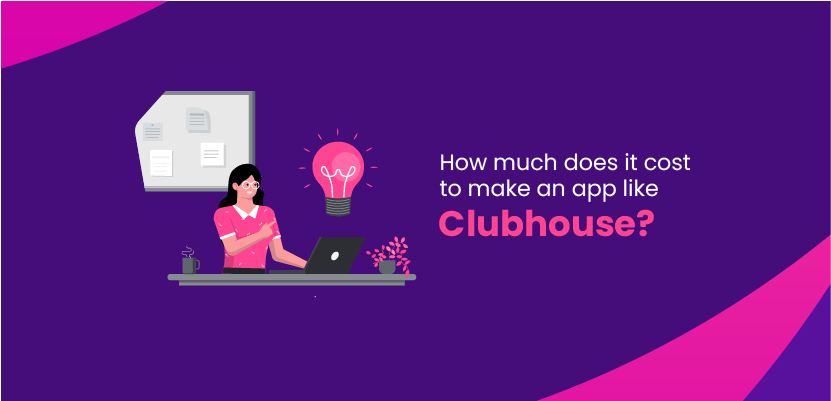Optimizing User Experience in Mobile Banking Apps: A Guide

Gareth Smith
1. Introduction to Mobile Banking and User Experience
Mobile banking has revolutionized the financial industry by enabling transactions at the tap of a screen, anytime, anywhere. However, the effectiveness of these applications hinges upon the quality of user experience they deliver. Poorly designed interfaces, complex navigation, or slow response times can turn users away. Therefore, optimizing user experience in mobile banking apps is imperative for banks to retain their customers and stay competitive. This guide will delve into strategies for enhancing user experience, thereby ensuring seamless, efficient, and satisfactory mobile banking transactions.
Understanding User Experience (UX)
Understanding User Experience (UX) involves gaining insights into how end users interact with a system like a website, an application, or software. It is an integral part of the design process from the earliest concepts to the final product. The core aim is to ensure that the product or service offers a positive experience that keeps users loyal to the product or brand.
UX is more than just the functionality of a product. It encompasses a variety of aspects including usability, accessibility, performance, design/aesthetics, utility, ergonomics, overall human interaction, and marketing. Importantly, it’s about creating easy, efficient, relevant, and all-round pleasant experiences for the user.
In the context of mobile banking apps, a positive UX is crucial. Financial transactions can be complex and stressful, therefore designing a mobile banking app that eases this process can result in satisfied and loyal customers. Users expect a seamless and intuitive interaction where they can easily conduct transactions, review their banking details and connect with customer service effectively.
By understanding and optimizing UX, businesses can ensure their mobile banking apps meet these expectations and offer a user-oriented solution that enhances customer satisfaction and loyalty.
The importance of UX in Mobile Banking
The importance of User Experience (UX) in mobile banking cannot be overstated. In an age where digital financial transactions have become the norm, users demand a seamless, secure, and efficient banking experience on their mobile devices. The right UX can easily be the difference between successful and lackluster mobile banking app.
Firstly, a top-notch UX enhances the overall usability of the app, reducing user error and frustrations. Navigational simplicity, clarity of content, and the speed at which users can perform transactions all contribute to an improved user experience. Secondly, a superior UX increases customer satisfaction and loyalty. An app that is easy and enjoyable to use is likely to keep customers coming back. In the long run, this can lead to increased usage and higher customer retention rates.
Finally, the UX in mobile banking apps play a pivotal role in building trust. Banking involves sensitive financial information, and users need to feel secure using the app. A well-designed UX can give the impression of a secure and reliable platform.
Therefore, optimizing UX in mobile banking apps is not a luxury, but a necessity for banks aiming to thrive in the digital era.
Overview of Mobile Banking Apps
Mobile banking apps have significantly revolutionized the banking industry by providing a platform for convenient and round-the-clock financial transactions. These apps allow users to perform a variety of banking tasks, such as checking account balances, transferring funds, paying bills, and even depositing checks – all at their fingertips.
The rapid rise of mobile banking apps is largely due to the increasing prevalence of smartphones and the demand for convenience by the modern consumer. As per a study by Citi’s 2018 Mobile Banking Study, 31% of consumers use their mobile banking app the most, even more than other popular applications like social media or weather apps.
At their core, mobile banking apps aim to optimize and simplify banking transactions for a seamless user experience. However, customer expectations continue to evolve and the need for further innovative measures to improve user satisfaction becomes a necessity. Given the intense competition in the banking sector, banks are now turning to user experience (UX) strategies to differentiate their mobile apps and foster customer loyalty.
2. The Role of UX Design in Mobile Banking
UX design plays a pivotal role in the success of mobile banking apps. It ensures that users can easily navigate the app, perform transactions, and access various services without confusion. The UX design’s goal is to create an intuitive, user-friendly platform that caters to the expectations of the app’s targeted user base. Moreover, it aids in developing trust by ensuring security and privacy. In mobile banking, where transactions are time-sensitive and critical, a seamless user experience significantly impacts user satisfaction and app engagement.
What is UX Design?
UX Design, or User Experience Design, is a multidisciplinary domain that focuses on enhancing user satisfaction with products or services. It encompasses a variety of aspects, including usability, accessibility, performance, aesthetics, and ergonomics.
At its core, UX Design is about understanding the needs, values, abilities, and limitations of users. It employs a user-centric approach that involves research to gain insights into user behaviors, emotions, and attitudes towards a product or service.
UX Design is not just about creating beautiful interfaces; it goes beyond aesthetics to create functional, easy-to-use, and meaningful experiences. It is concerned with the entire journey of a user with a product or service, from discovery and purchase, to use, troubleshooting, and beyond. Successful UX Design results in a seamless, efficient, and enjoyable user experience, which leads to user satisfaction and loyalty. This in turn drives business success.
UX Optimization for Mobile Banking
Optimizing User Experience (UX) in Mobile Banking apps is crucial in today’s digital age where customers demand convenience, speed, and security in their financial transactions. A well-designed mobile banking app not only promotes customer engagement but also drives customer satisfaction and loyalty.
The UX in Mobile Banking involves several key areas. First up, simplifying navigation is a must. Users prefer a clear, intuitive layout with easily accessible features. Complicated menus and unclear instructions can result in user frustration and app abandonment.
Moreover, secure and quick login methods enhance user experience. Biometric authentication, like fingerprint or facial recognition, provides convenience and peace of mind for users. Seamless transactions are also important. Reducing the number of steps for funds transfer or bill payment can significantly improve user satisfaction.
Another key area is customization. Allowing users to customize their app interface or transaction preferences can make the banking experience more personalized. Lastly, immediate customer support should be available within the app. Quick resolution of queries or issues enhances user trust and app usability.
Remember, an optimal user experience in your mobile banking app is not a one-time effort, but rather a continuous process of learning, adapting, and evolving with your user’s expectations and needs.
The intersection of Mobile App Design and UX
The relevance of mobile app design and User Experience (UX) intertwines at several points in the realm of mobile banking apps. A robust design incorporates aesthetics and functionality, both of which heavily influence the quality of the UX. It’s a symbiotic relationship; good design drives a better user experience, which in turn prompts more engagement with the app, leading to higher customer satisfaction.
The interface should be sleek, intuitive, and easy to navigate, even for a novice user. Every element of the design, from button placement to font selection, directly impacts the user’s experience. A well-executed design will streamline the customer journey, making banking transactions quicker and simpler.
Additionally, mobile app design isn’t solely about aesthetics. It also involves ensuring the app runs smoothly, has a fast load time, and minimal interruptions. These technical aspects are equally critical in enhancing the overall UX. Thus, the intersection of mobile app design and UX is a core determinant of the app’s success or failure. Through optimal design, banking apps can provide an exceptional user experience, fostering customer loyalty and boosting engagement.
3. Enhancing Usability and User Engagement
Enhancing usability and user engagement is vital for optimizing the user experience in mobile banking apps. For improved usability, the app must be intuitively designed, making it easy for users to find information and execute transactions. Fast load times, instant feedback, and seamless navigation are critical. To boost user engagement, implement personalized features like customizable dashboards and real-time notifications. Gamification of savings or rewards programs can also encourage regular app usage. Lastly, ensure the app is accessible for all users, including those with disabilities, to extend your user engagement reach.
Defining Usability in Mobile Apps
The usability of mobile apps can be defined as the effectiveness, efficiency, and satisfaction a user experiences when interacting with an app. When an app is deemed usable, it means that the app’s functionalities are easy to understand and use, and users can achieve their goals seamlessly.
From a technical perspective, usability includes the app’s response time, error rate, and learnability. A mobile app with high usability should respond swiftly to the user’s input, have a low error rate, and be easy for new users to learn how to use.
From a user-centric perspective, usability encompasses the design and layout of the app, including its simplicity, consistency, and intuitiveness. A user-friendly mobile app must have a simple and uncluttered design, consistent throughout all screens, with intuitive navigation and clear, concise instructions.
In the context of mobile banking applications, usability becomes even more critical, as users require swift, simple, and secure access to their financial information. The ultimate aim is to cultivate user trust and satisfaction, leading to increased user engagement and retention. Therefore, optimizing usability is paramount for a robust and successful mobile banking experience.
Strategies to improve User Engagement
User engagement is a vital element in optimizing user experience in mobile banking apps. It’s the determinant of customer retention, and the more engaged users are, the more likely they are to use the app frequently and recommend it to others. Therefore, it’s crucial to implement strategies that boost this engagement.
For starters, personalization can significantly improve user engagement. By customizing the app experience per individual user’s needs and preferences, the app can provide a personal touch that resonates with the users, thus enhancing their engagement. This could mean personalized greetings, custom layout options, or tailored product recommendations.
Additionally, in-app tutorials and guidance can help familiarize users with the app, thus making navigation easier and enriching user experience. Interactive and easily accessible help or FAQs can assist with any issues or queries that may arise.
Gamification, such as points, rewards, or badges for completing certain tasks, can be a fun and interactive way to boost user engagement. This not only encourages users to explore more features of your app, but can also build loyalty.
Finally, keeping the app updated with fresh content and features can keep users engaged and interested. As technology and customers’ needs evolve, continuously innovating and improving the app can keep it relevant and useful.
Studying User Behavior in Mobile Banking
Understanding user behavior in mobile banking applications is the first step toward optimizing user experience. Users’ interactions with an app can offer valuable insights into their needs, preferences, and challenges. With this information in hand, developers can create an application that is functional, user-friendly, and efficient.
Several analytic tools and methods can provide a detailed look at how users engage with a mobile banking app. For instance, usage data can reveal the most and least used features, the duration of each session, and peak usage times. These metrics can identify areas where users may be struggling and potential opportunities for improvement.
User engagement can also be assessed through customer feedback and reviews. Positive feedback can highlight strengths and successful features, while negative reviews can point out bugs and inefficiencies that may be hindering user experience.
In a nutshell, studying user behavior allows banking app developers to understand their customers better. This understanding can drive updates and improvements that align with users’ expectations and improves their banking experience.
4. Understanding the latest Mobile Banking Trends
Understanding the latest mobile banking trends is crucial for optimizing user experience in mobile banking apps. This includes embracing artificial intelligence (AI) for personalized services, integrating biometric authentication for enhanced security, and adopting open banking to enable customers to aggregate all their financial information in one place. Additionally, implementing contactless payments and voice-driven commands are trending. Staying in sync with these trends will help improve the app’s functionality, making it more user-friendly and efficient, thus significantly boosting user experience.
Trends dominating the Mobile Banking landscape
As we navigate the digital wave, several discernible trends are shaping the mobile banking landscape. First and foremost is the rise of Artificial Intelligence (AI). AI, in the form of chatbots, is becoming a critical tool for improving customer service, facilitating seamless transactions, and providing personalized financial advice.
Secondly, the integration of biometric authentication technologies in banking apps is taking security to a new level. Face ID, fingerprint scanning, and voice recognition are providing a robust and hassle-free security layer, replacing traditional passwords and making transactions more secure and convenient.
The third trend is the rise of Open Banking; APIs are allowing third-party developers to build applications and services around a financial institution. This approach is driving innovation, providing users a unified view of their financial information across different financial institutions.
Lastly, the use of Big Data and Analytics is helping institutions gain customer insights, understand their needs better, and provide personalized offers and services. Also, the rise of neobanks, entirely digital banks without any physical branches, is disrupting the traditional banking sector and is set to redefine the future of banking. To stay competitive, banks will need to adopt these trends and provide an optimized user experience in their mobile banking apps.
The rise of User Testing in Mobile Banking
The rise of user testing in mobile banking is an evolutionary trend in the digital banking world that cannot be ignored. With the rapid growth of mobile banking apps, financial institutions are increasingly focusing on optimizing user experience (UX). This has led to a surge in the need for comprehensive user testing.
User testing in mobile banking offers the opportunity to understand users’ needs, preferences, and interactions with the app. Whether it’s navigational issues, transactional glitches or visual consistency, user testing helps identify areas of improvement. It also highlights features liked by the users, allowing banks to focus on enhancing these aspects.
Notably, user testing has gone beyond its traditional role of troubleshooting and debugging. Today, it plays a crucial role in shaping the app’s overall strategy and design decisions. This proactive approach helps create a user-centric design that provides an intuitive and engaging experience to the users. As a result, user testing is emerging as a game-changer in the mobile banking landscape, driving the shift from product-focused to customer-centric digital solutions.
Mobile Banking Security as a growing trend
Mobile banking security is a rapidly growing trend that is of utmost importance in the digital age. As an increasing number of people are shifting towards using mobile banking applications for their daily monetary transactions, the need for robust and reliable security measures has become paramount.
Financial transactions are sensitive and involve personal information. This makes them the prime target for cybercriminals. Therefore, the protection of user data in mobile banking apps isn’t a luxury anymore but a necessity.
The implementation of advanced security mechanisms such as two-factor authentication (2FA), biometric authentication, and encryption is a common trend in mobile banking apps. These technologies add an extra layer of security, making it extremely difficult for unauthorized persons to access user information.
In addition, AI and machine learning are also being utilized to detect and prevent fraudulent activities. They help identify unusual transaction patterns and can notify the user and bank in real-time.
Moving forward, the focus on mobile banking security is only expected to intensify. This growing trend signifies the commitment of banks and financial institutions to create a safer and more secure environment for customers to carry out their financial transactions.
5. Personalization in Mobile Banking and its impact on Customer Experience
Personalization in mobile banking can significantly enhance customer experience. By leveraging customer data, banks can create a tailored banking interaction which would feel like a personalized banking assistant to the user. This could range from pre-filled forms, relevant product recommendations, or alerts for financial planning. With artificial intelligence, personalization could even extend to predictive banking. This not only simplifies the user’s banking journey but also fosters a deeper relationship with the customer. A personalized banking experience can be a strategic differentiator for banks in an increasingly competitive market.
Exploring Personalization in Mobile Banking
Personalization in mobile banking is revolutionizing how customers interact with their financial institutions. Tailored experiences based on individual needs and behaviors make banking less of a chore and more of a streamlined process, enhancing user satisfaction and increasing engagement.
Banks are using sophisticated algorithms and artificial intelligence to gather insights about customer behavior. This information is then used to customize and predict the needs of users. For example, if a customer frequently uses international wire transfer services, the app might suggest setting up automatic transfers or show exchange rates relevant to their transactions.
Personalization does not only mean responding to existing behaviors but also anticipating the needs of customers. Predictive analytics can be used to anticipate a user’s needs before they arise, offering solutions or prompts to assist with future events such as upcoming bills or potential savings opportunities.
Together, these strategies increase customer loyalty and deepen relationships between financial institutions and their customers. This level of personalization in mobile banking is transforming the banking experience from a transactional one to a highly personalized, insightful engagement, optimized for each user’s specific requirements. In conclusion, personalization is a powerful tool in optimizing user experience in mobile banking applications.
How Personalization shapes Customer Experience
In the ever-evolving realm of digital banking, personalization has emerged as an integral strategy to optimize user experience on mobile banking apps. Personalization refers to the process of creating tailored experiences for each user based on their unique demographics, behaviors, and preferences. The ability to personalize services is not a novelty in the financial sector; rather, it is a necessity driven by the increasing demand for better user interfaces and smoother customer journeys.
The implementation of personalization in mobile banking applications significantly shapes the customer experience. It allows banks to provide services that are attuned to individual customer’s needs and preferences, thus making their interactions more meaningful and satisfying. For instance, a personalized banking app may suggest the most relevant services, execute transactions with ease, and offer insights based on the customers’ financial habits. By doing so, it ensures an engaging and user-centric experience, which is key to customer retention and loyalty.
In essence, personalization is the cornerstone of an optimized user experience, bridging the gap between banks and their customers in the digital landscape. It allows banks to interact with customers on a more personal level, fostering a stronger connection and a more satisfying user experience. In an era where customer experience is king, personalization of mobile banking apps is not just an add-on feature, but an absolute essential.
UX Best Practices for Personalization
Personalization is a key element in optimizing user experience in mobile banking apps. This feature tailors the app experience to meet individual user’s needs, enhancing user engagement and satisfaction. One best practice for personalization is to allow users to customize their dashboard or home screen. By enabling users to choose which features or information are immediately visible upon logging in, we can significantly improve the user experience.
Another best practice for personalization involves leveraging user data intelligently. This could involve using machine learning algorithms to analyze a user’s transaction history and providing tailor-made advice or insights. For example, if a user frequently transfers money at the end of the month, the app could suggest setting up an automatic transfer to make the process easier.
Personalized push notifications can also enhance the user experience. This could include sending reminders about due payments, alerts about suspicious activity, or updates on recent transactions. These notifications should be customizable to the user’s preference to prevent them from being intrusive.
Remember, personalization should ultimately serve the user’s needs and enhance their experience. It should be done thoughtfully and with a deep understanding of the user’s preferences and behaviors.
6. The Future of Mobile Banking: Digital Banking, Mobile Payments, and Emerging Banking Technology
As we delve deeper into the digital age, mobile banking continuously evolves. The future of mobile banking lies in enhancing digital banking platforms, incorporating advanced mobile payments systems, and utilizing emerging banking technology. This evolution aims to provide quicker, more convenient, and secure transactions. Anticipate the rise of biometric authentication, voice-command banking, AI-powered customer service, and blockchain-based security features. The integration of such technologies will not only optimize user experience, but also redefine mobile banking, shaping it into an essential part of our everyday monetary transactions.
Digital Banking and its implications
Digital banking represents a significant shift in the financial landscape, with implications that extend far beyond the realm of finance itself. This futuristic banking approach refers to the digitization of all the traditional banking activities and services that traditionally were only available to customers when physically inside of a bank. These digital services include: money deposits, withdrawals, transfers, loan applications, and so forth—all capable of being performed through digital banking platforms, without requiring any physical interaction.
The implications of digital banking are profound. Firstly, it increases the accessibility and convenience of banking services. Users can now perform transactions at any time and from anywhere, using their mobile devices. Secondly, it can potentially lower the costs of banking operations, enabling savings to be passed on to customers in the form of lower fees. Lastly, it can offer a more personalized user experience, with tailored products and services. However, these benefits come with challenges such as cybersecurity threats and data privacy issues. With the right strategies and technological support, digital banking can revolutionize the way we manage our finances.
The growth of Mobile Payments
The boom of technology has given rise to a radical transformation in the financial industry, especially with the advancement of mobile payments. The growth of mobile payments has been meteoric and shows no signs of slowing down. According to eMarketer, mobile payments will exceed $1 trillion globally by 2023.
The convenience of being able to transfer funds, pay for goods and services, and manage bank transactions with just a few taps on a smartphone has attracted millions to use this technology. Thanks to the continuous innovation by fintech companies, banks, and tech giants, these digital wallets are fast becoming a mainstream payment method. Nowadays, it’s not unusual to see consumers at the local café or the grocery store, paying just by scanning a QR code or bumping their phones.
This proliferation of mobile payments has also compelled businesses to adapt and optimize their operations to this digital shift. From integrating mobile payment options to developing their mobile apps, these measures ensure a seamless and engaging user experience for their customers. As the trend continues, the future of mobile payments seems to be paving the path towards a cashless society.
Technological advancements in Banking Technology
Technological advancements in the field of banking have drastically transformed the way customers interact with financial institutions, giving rise to immense progress in banking technology. Mobile banking apps stand at the forefront of this transformation, bringing banking services right to the fingertips of customers.
With the advent of artificial intelligence (AI), machine learning, and blockchain technology, the banking industry has seen significant improvements in efficiency and customer service. AI and machine learning, for instance, are being used to detect fraudulent activities and customize services according to customer behavior. Moreover, blockchain technology is revolutionizing transactions with its ability to create secure and transparent financial systems.
Furthermore, the incorporation of cloud computing in banking technology has enabled banks to manage high volumes of data securely and efficiently. This, coupled with advanced data analytics, allows banks to leverage customer data to improve and personalize their services.
Moving forward, these technological advancements are poised to continue redefining the landscape of banking technology, hence, financial institutions must leverage these technologies to upgrade their mobile banking apps and ultimately optimize user experience.




